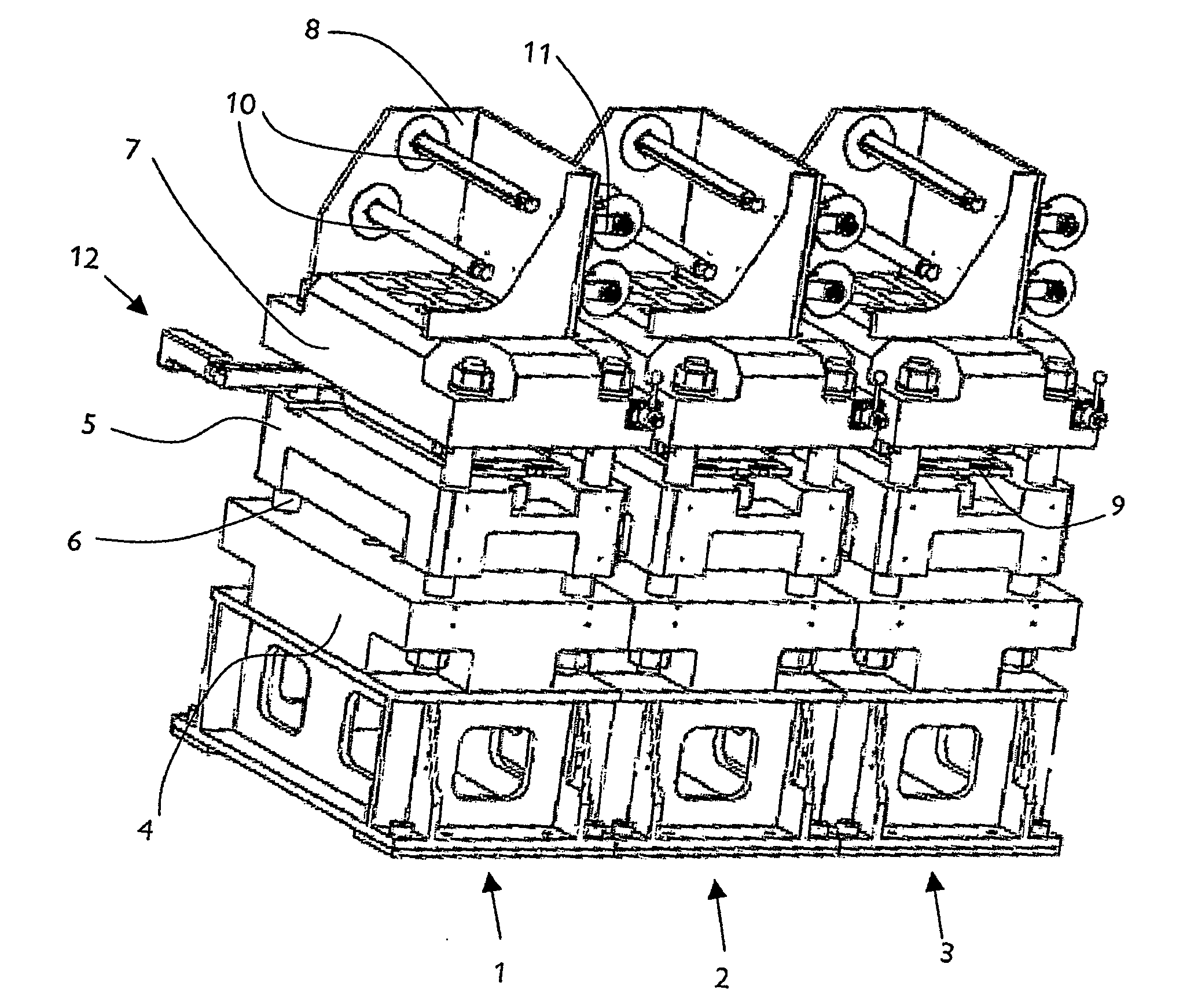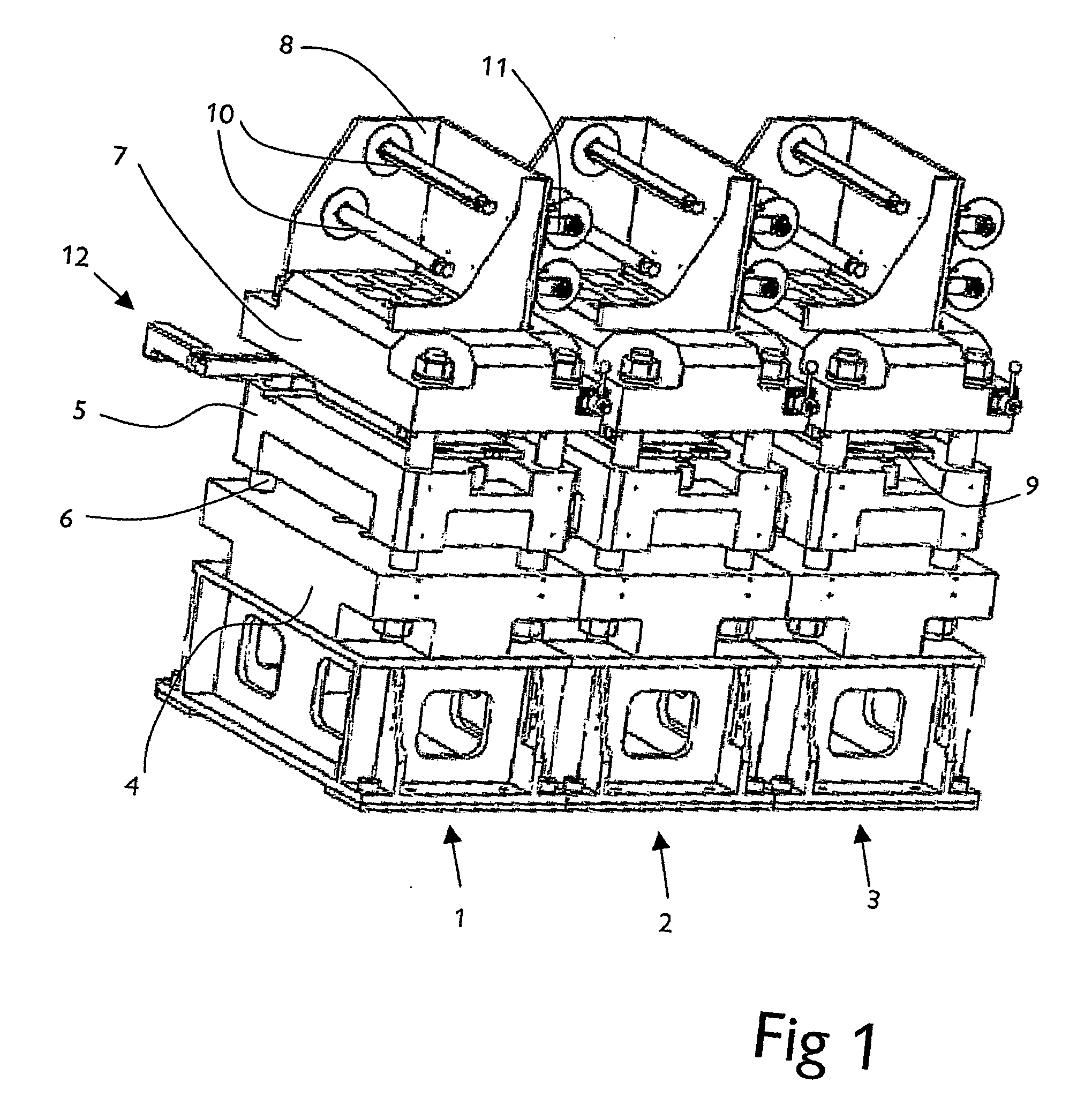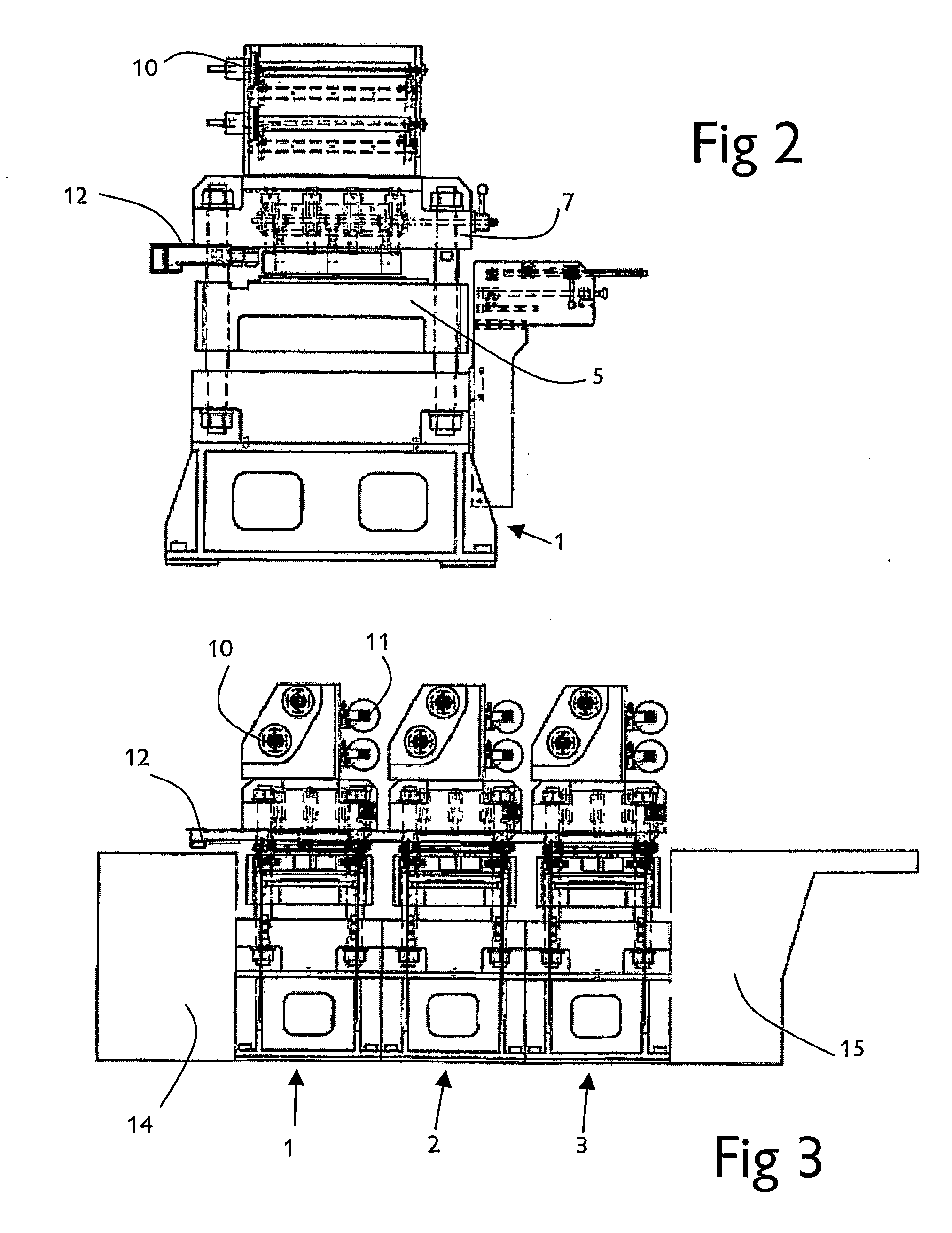Multi-station press machine
- Summary
- Abstract
- Description
- Claims
- Application Information
AI Technical Summary
Benefits of technology
Problems solved by technology
Method used
Image
Examples
Embodiment Construction
[0020] Referring first to FIGS. 1 to 3, a three-station print finishing press comprises three substantially identical modular units 1, 2 and 3, each consisting of a base frame 4 containing a hydraulic ram (not shown) mounted vertically so as to act on a press bed plate 5 which is slidably mounted on four vertical pillars 6 extending upwardly from the base frame 4. The pillars 6 carry between them at their upper ends a fixed head plate 7 on which is mounted a carrier 8 to support reels of foil for use in a hot foiling process.
[0021] The underside of the fixed head plate 7 carries a support for the die or foiling tool 9 such that the tool can be slid into and out of position easily to permit a rapid changeover from one tool to another. In use, foil passes from a supply reel carried by a first horizontal support 11 down one side of the head plate 7, under the face of the die or tool 9 and back up the other side of the head plate 7, the waste material being wound on to a collection ree...
PUM
| Property | Measurement | Unit |
|---|---|---|
| Pressure | aaaaa | aaaaa |
Abstract
Description
Claims
Application Information
 Login to View More
Login to View More - R&D
- Intellectual Property
- Life Sciences
- Materials
- Tech Scout
- Unparalleled Data Quality
- Higher Quality Content
- 60% Fewer Hallucinations
Browse by: Latest US Patents, China's latest patents, Technical Efficacy Thesaurus, Application Domain, Technology Topic, Popular Technical Reports.
© 2025 PatSnap. All rights reserved.Legal|Privacy policy|Modern Slavery Act Transparency Statement|Sitemap|About US| Contact US: help@patsnap.com



